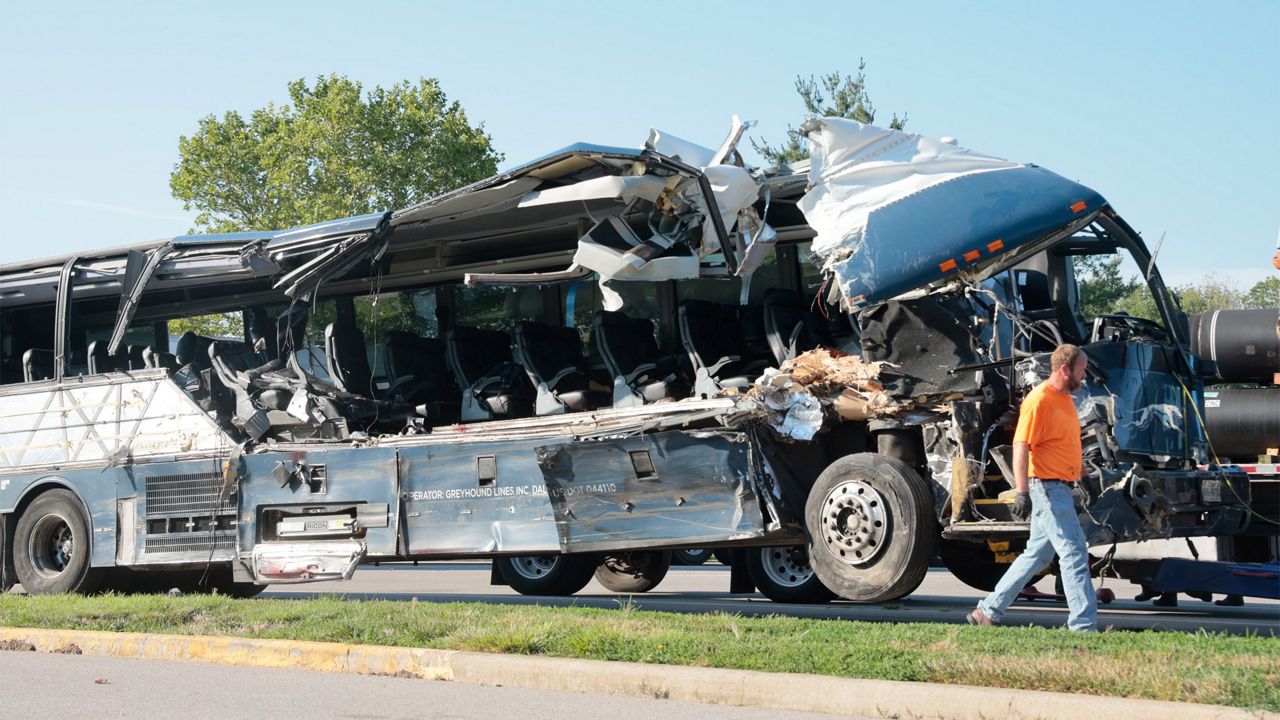ST. LOUIS — Rest area safety will be one of the main focuses of the National Transportation Safety Board’s (NTSB) investigation after a Greyhound bus crashed into three tractor-trailers parked at an I-70 rest area outside of St. Louis.
Three people died and 14 others were injured in the crash that happened just before 2 a.m. Wednesday, according to police.
Tom Chapman, a member of the NTSB said he and his team did a preliminary inspection of the crash scene and the bus wreckage Thursday. Investigators are also in the process of getting information on the driver's history and how long he'd been working before the 240 mile drive between Indianapolis and St. Louis, the intended stop.
The 2014 motorcoach was equipped with inward and outward facing cameras and the video will be analyzed. There were 22 passengers and a driver on board and thevehicle did have seatbelts.
Chapman explained the NTSB is particularly interested in rest area safety, bus occupant protection, bus driver fatigue and medical fitness.
“Rest area safety is going to be one of the things we are going to be looking at closely here. It's my understanding that this is a matter of state law and it may vary from state to state. That is something we are still seeking to determine. We will look at that very closely. We will look at the circumstances under which those vehicles were located where they were,” said Chapman.
Parking spots are at a premium in public rest areas, and truckers often park along exit ramps at night. The practice is illegal in Illinois and many other states, but police often ignore it, understanding the shortage of places for overnight truck parking.
“Certainly we'll be looking at the location, the proximity of the parked trucks, such details as the width, the length of the ramp,” Chapman said.
The team of investigators is expected to be gathering information for nearly a week. The final report is expected in 12-24 months. If investigators determine safety changes need to be made before the report is final it could make emergency recommenations.





